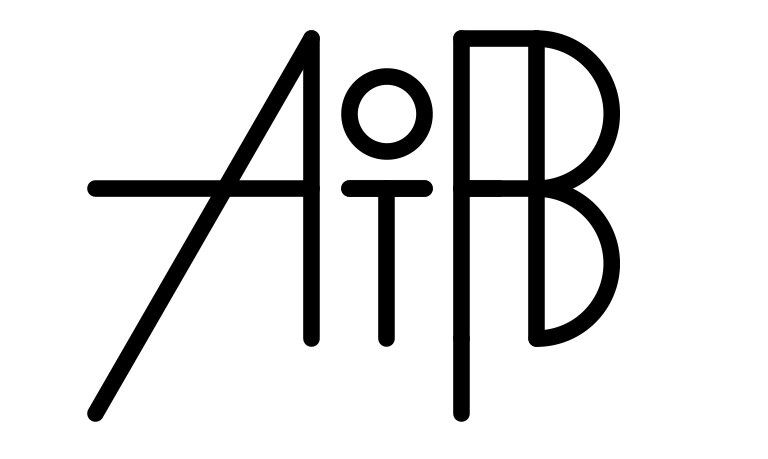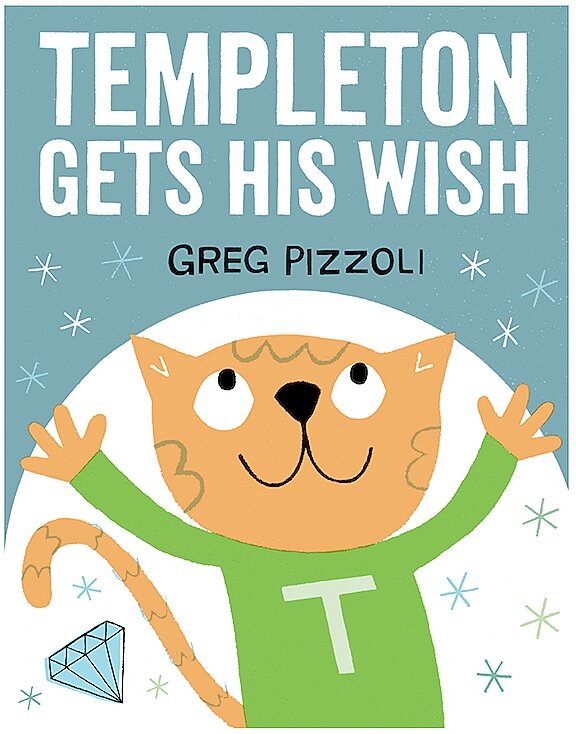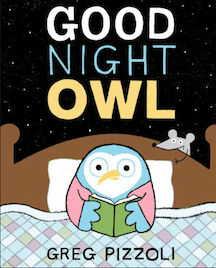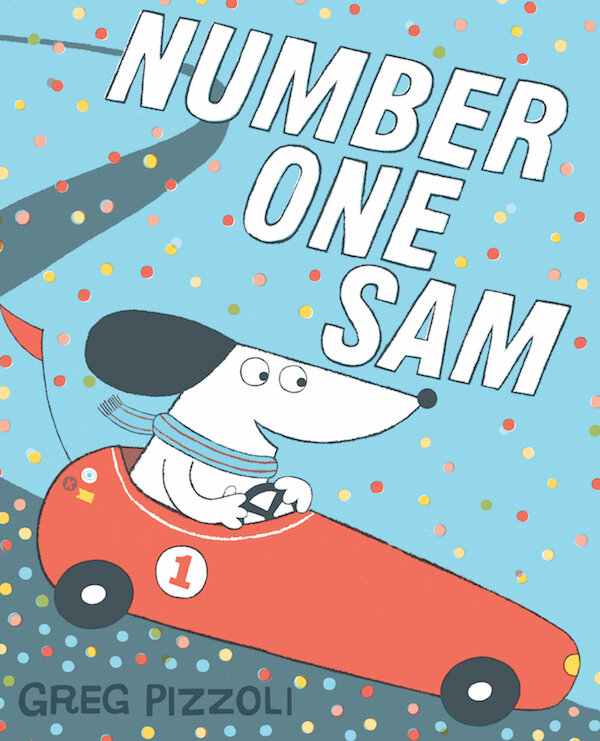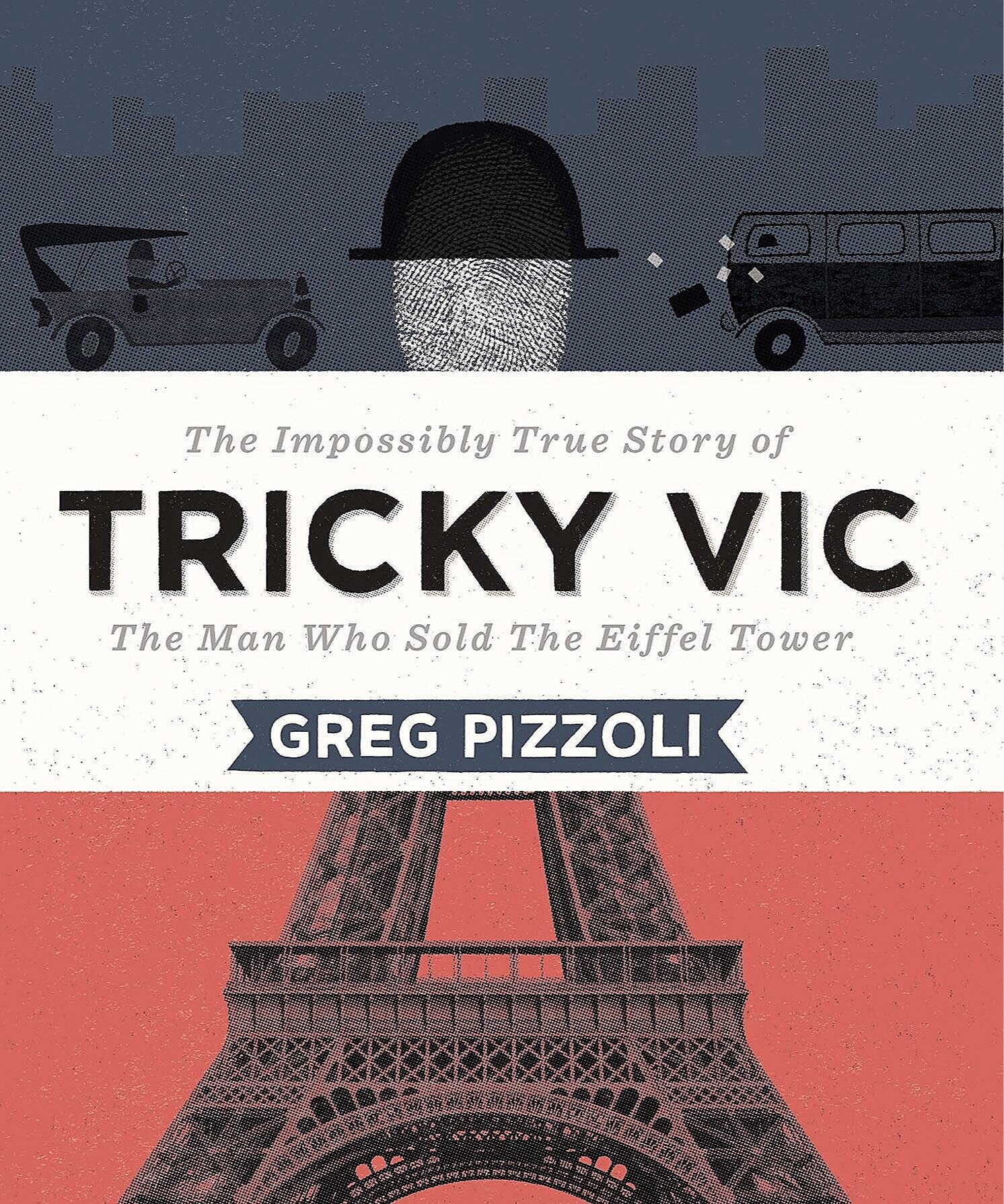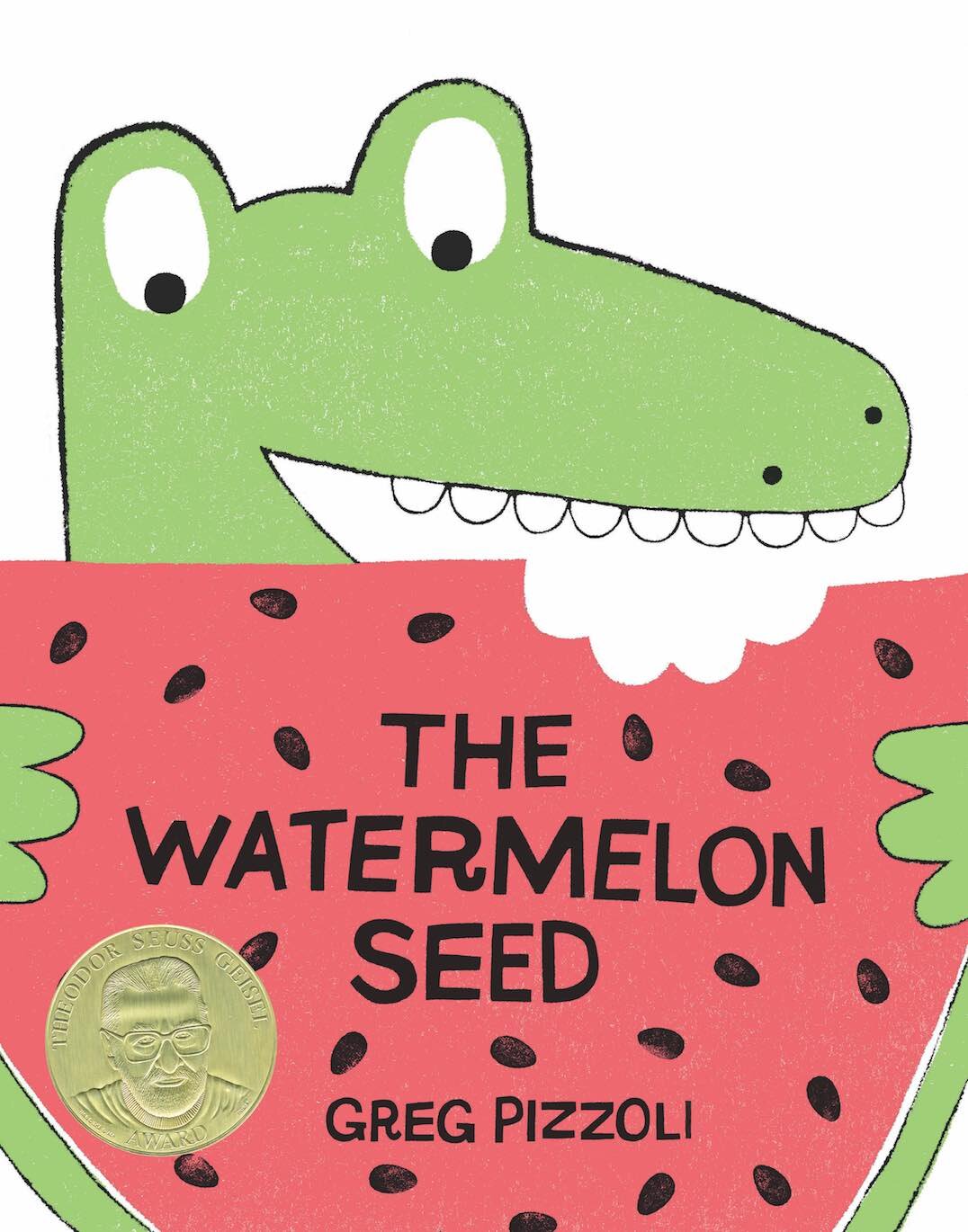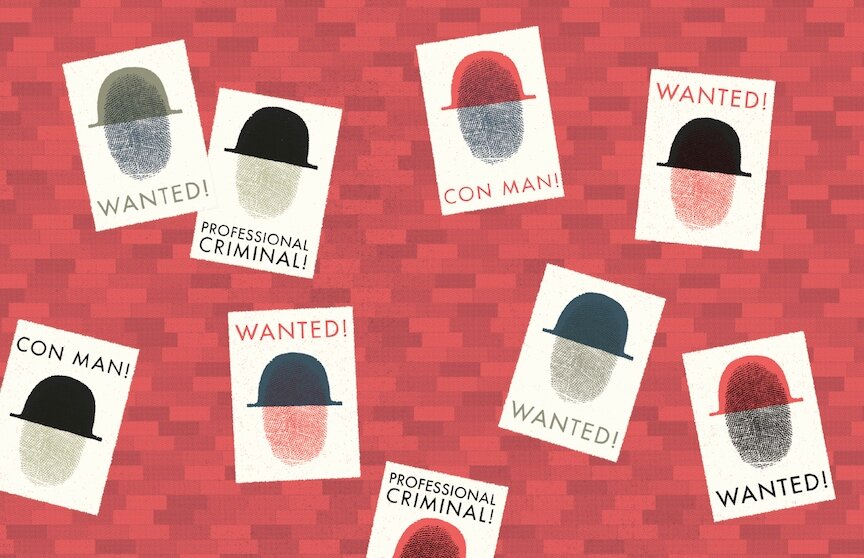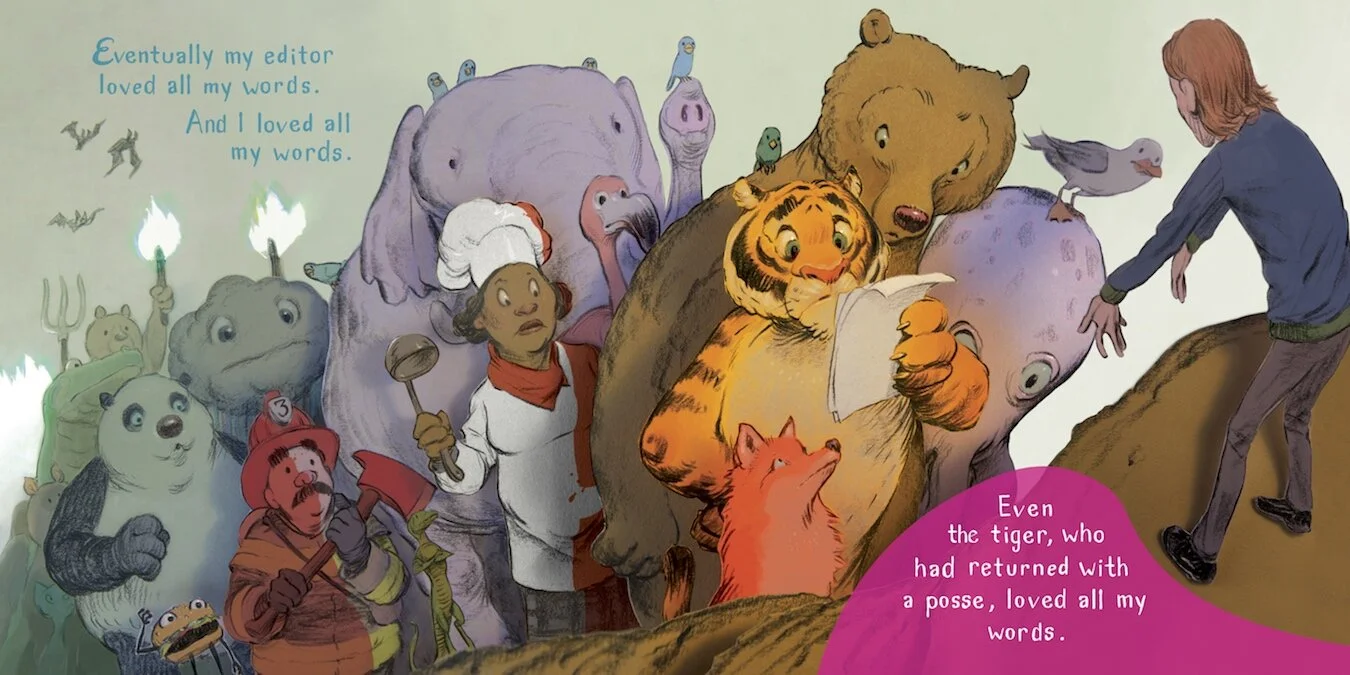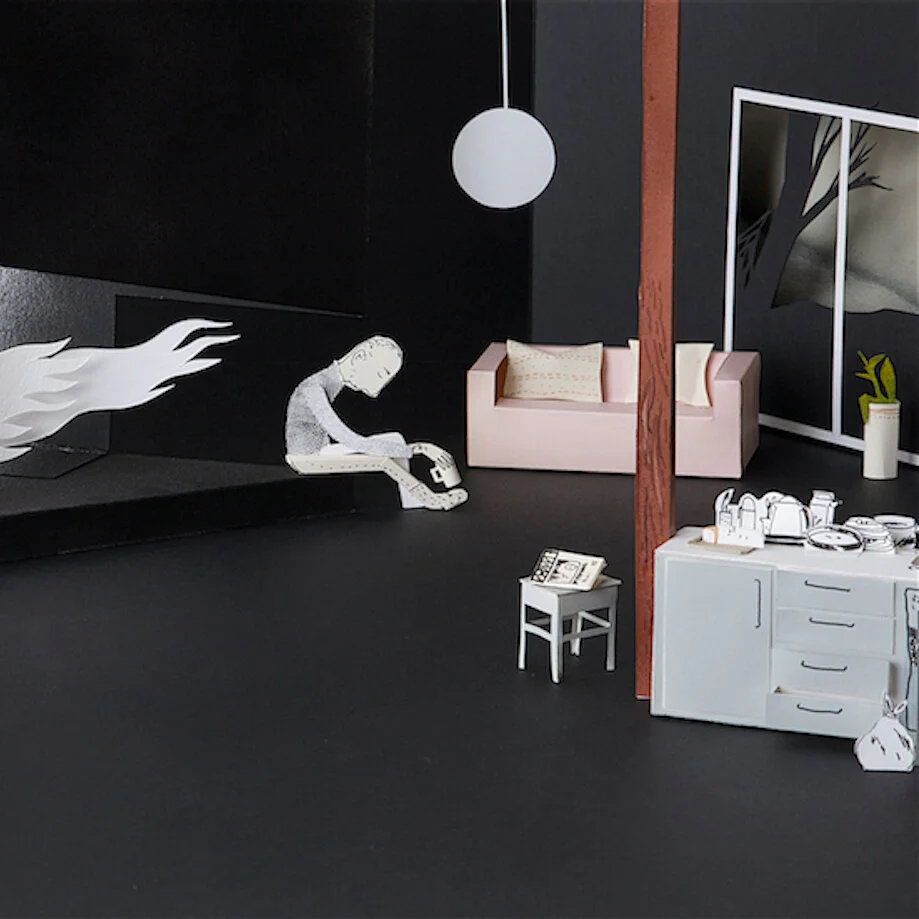An Interview with Greg Pizzoli
Greg Pizzoli
September 6, 2016
We interviewed Greg Pizzoli, award-winning children's author, illustrator and screen printer. His first picture book, The Watermelon Seed, won the 2014 Theodor Seuss Geisel Award for most distinguished book for young readers. Before his first book was published, his work had already been noted twice with Portfolio Honor Awards by SCBWI. He lives and works in Philadelphia.
A Selection of Work
Was there anything about Good Night Owl that was a departure from your earlier books?
To a certain extent the writing process was different. Good Night Owl was the first book I read to kids before it was finished. I was on tour promoting Number One Sam and working on Good Night Owl at the same time. So I had the opportunity to read it to large groups of kids while it was still in sketch form, and adjust the pacing and some of the text based on how well it landed during the read-aloud. I had never done that before, but I think it was good practice, and I do think it works really well as a read-aloud because of that process. Once I had kids screaming—"It's a mouse! It's right behind him!"—I knew I was on to something.
Cover of Good Night Owl, Greg Pizzoli
Where did the idea for this book come from?
The first version of this book was about an owl walking alone at night through a forest. I love hiking and forests, and they are a comfortable shorthand for "the mysterious" in kid's books, and that's where I was headed. I wanted to do a book that was weird, for lack of a better word, and just something unexpected. But I didn't really have a story, just this character I liked and this idea that he was searching for something.
And after doing this for a few years, I've had the opportunity to do lots of school visits and read my books to groups of hundreds of kids. Most kids seem to get a kick out of the little references in each book to other books I've made—like the fact that Number One Sam's trophy is on Templeton's bookshelf, or that Kroc (from The Watermelon Seed) has watermelon decals on his race car in Number One Sam–stuff like that. They love it. Someone always asks—"Did you see that the crocodile has a watermelon on his car?"—I did see. I drew it. But that doesn't matter—the point is that with Good Night Owl, I could really make it about the kids pointing out something—without making it a seek-and-find book.
Interior spread from Good Night Owl, Greg Pizzoli
I like the tension created because the kids are listening to a story, but the book never directly references this thing that is so obvious to them. It drives them nuts. Once they give in to it, it's a riot and they just laugh, but at first they are indignant that the Owl doesn't see the mouse (the mouse is named Noise, by the way).
Interior spread from Good Night Owl, Greg Pizzoli
Interior spread from Good Night Owl, Greg Pizzoli
Interior page from Good Night Owl, Greg Pizzoli
Cover of Templeton Gets His Wish, Greg Pizzoli
Interior spread from Templeton Gets His Wish, Greg Pizzoli
Interior spread from Templeton Gets His Wish, Greg Pizzoli
Interior spread from Templeton Gets His Wish, Greg Pizzoli
Interior spread from Templeton Gets His Wish, Greg Pizzoli
Your path to become a children's illustrator/author was atypical. Can you describe the steps that brought you to this career?
I decided I wanted to explore making picture books while I was in graduate school studying Book Arts and Printmaking at The University of the Arts in Philadelphia. My mentor there, Susan Viguers, is the daughter of Ruth Hill Viguers, who was the editor of The Horn Book Magazine for many years. Susan has a great appreciation for children's books, particularly those that deal in nonsense or have an odd bent, and she really encouraged me to try my hand at making my own books. My first few attempts were pretty bad, but after a few years of learning more about the history and contemporary stuff happening, I started to figure it out. Still figuring it out now, of course. I met author/illustrator Brian Biggs when he took a silkscreen class I was teaching and he introduced me to his agent, Steven Malk. Steve, Brian, and a few other very generous people mentored me as I worked on my portfolio and writing over a few years, and eventually Rotem Moscovich saw my work at an SCBWI event. She signed up The Watermelon Seed and we've been making books together since.
Cover of The Watermelon Seed, Greg Pizzoli
Title page from The Watermelon Seed, Greg Pizzoli
Interior spread from The Watermelon Seed, Greg Pizzoli
Interior spread from The Watermelon Seed, Greg Pizzoli
Did you have art classes as a child in school?
Nope. Well, that's not true. I did have art classes when I was very young. I remember I won "first place" in the art contest in first grade. I remember I drew a space scene on yellow poster board. But I didn't take any art classes in high school or even much of elementary school. I think somewhere along the way someone probably told me I wasn't any good at it, and I probably believed them. As a kid I would draw constantly though—memorizing Ed Emberley's books and drawing scenes built around those. I would draw levels for Super Mario Bros, too. I'd tape pieces of graph paper together in a long line and draw landscapes with impossible jumps and pipes that fed into lava.
I got back into art in college, when I wanted to learn to silkscreen so I could make posters and CD covers for my band. That was in 2005. I fell in love with silkscreen and just kept doing it—I guess for a little more than ten years now. I started making posters for weird avant garde bands and fell into a crew of other artists like Seripop, Zeloot, Gunsho, and Tim Gough. They all gave me tips on how to print better, layout files, get work, etc.—they all helped a lot. The screen printers are the bastard-children of the printmaking community —silkscreen is too commercial for a lot of "fine art" people, but it sort of doesn't make a lot of sense in a commercial context either. So it tends to attract weirdos, and weirdos are typically nice, and so it's a really nice community. That's my theory anyway. Children's book people are the same way.
Cover of Number One Sam, Greg Pizzoli
Interior spread from Number One Sam, Greg Pizzoli
Interior spread from Number One Sam, Greg Pizzoli
Interior spread from Number One Sam, Greg Pizzoli
Interior spread from Number One Sam, Greg Pizzoli
Do you keep a sketchbook?
I always have some kind of sketchbook on me, but I don't keep a chronological sketchbook, and my sketchbooks are definitely not as pristine as some that I've seen online. They are just a place to scribble some thumbnails, and often make a lot of lists. I did start keeping a journal in the last year, and I've enjoyed that process.
Thumbnail sketches for Good Night Owl, Greg Pizzoli
What is a favorite book from childhood?
I often show people my childhood copy of Arnold Lobel's Owl at Home, which was, and still is, one of my favorites. But I've shown that online before, so I'll show something different . . . I'm including this one: The Lake Mess Monster by Beverly Komoda. I loved the not-that-terrifying monster and how he'd dunk the humans underwater and flip over their boats. Now that I look at it, it actually has some parallels with Dragon Was Terrible, Kelly DiPucchio's latest book, with illustrations by me.
Pizzoli's studio
We are curious about your use of individual spot colors in lieu of CMYK (4-color process) in some of your books. Can you explain how you make that choice?
As a screenprinter, working with spot colors is just my natural way of working—and I simply like the aesthetic of things that are just a few colors. Even though my book projects are all finished in Photoshop now, I try to hang on to that minimal color look, and spot colors can really make a book feel special. I'm lucky that Disney-Hyperion has allowed me to make all of my books with them using spot colors. Not all of my books are though— any of my other books, Tricky Vic for example—those are CMYK. I considered doing Tricky Vic in spot, but once I started making the art, it didn't make sense. I needed the range CMYK allows.
Cover of Tricky Vic, Greg Pizzoli
For older children, Tricky Vic has a graphic illustration style that we love. Would you like to do more non-fiction books?
I would! And I am. My next nonfiction picture book comes out in the summer of 2017 from Viking. I can't say too much more at the moment, but I think fans of Tricky Vic will not be disappointed.
From the inside back cover of Tricky Vic, Greg Pizzoli
Interior page from Tricky Vic, Greg Pizzoli
We applaud your conviction that picture books deserve to be regarded as a legitimate art form. Do you see a shift toward that recognition?
I'm not sure if I would be the best judge because I feel so passionately about picture books, and because I work in the field. I don't know whether an average person considers them art or not—but I do see more and more beautiful picture books every time I am at a bookstore or museum gift shop or library. I think the field has leveled up in a lot of ways recently, and the amount of truly fantastic work being made now is mind-blowing.
Interior spread from Tricky Vic, Greg Pizzoli
You have said that picture books should be appreciated by adults as well as children. We share that view. How does that sense inform your work?
I'm not sure, but I do believe it's true.
Interior page from Tricky Vic, Greg Pizzoli
Interior page from Tricky Vic, Greg Pizzoli
End papers from (from top left): Good Night Owl, Tricky Vic, Templeton Gets His Wish and The Watermelon Seed
We'd like to give a nod to the creative endpapers in your books. Is that becoming a signature of your work?
I think so? And the case covers maybe? I'm not 100%, but I think it was Joann Hill and Rotem Moscovich who came up with the idea to do the endpapers for The Watermelon Seed like the inside of a watermelon. Those two are both brilliant and brave, and they make my books much better. We always do a special case cover, too. I sort of can't help it—I always want to do something a little unexpected. I think it's the collector in me—I like special editions.
Case cover for Templeton Gets His Wish, Greg Pizzoli
You followed your agent Steven Malk's advice to "slow down and get good." Can you share any other advice for illustrators or authors?
I really think that is the best advice. Just slow down. Put only your best work out there. Be nice to people.
We appreciate this opportunity to learn more about your creative approach to illustration and book creation. Thanks for sharing your work, Greg!
For more on Greg Pizzoli:
All images used with permission from Greg Pizzoli.

